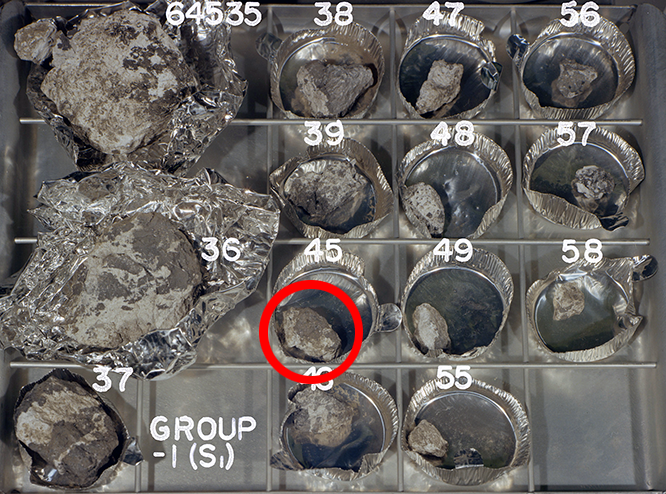
Fact sheet
64545 is one of nine small breccia samples collected as rake samples from station 4 on Stone Mountain (others are 64539, 64546, 64547, 64549, 64555, 64556, 64557 & 64558). They contain a chalky white portion and a dark (basaltic) aphanitic portion. These rocks are highly fractured and it is probable that the samples broke during collection or the return trip to Earth. They have very sharp boundaries between the light and dark material. The white portion of these samples was origianlly a coarse-grained anorthositic norite, but it has been highly shocked.
The sample weighed 14.1 grams before analysis and has not been dated.
Further details of this and other Apollo samples are here: http://curator.jsc.nasa.gov/lunar/
The Apollo 16 landing site was in the hilly region around Descartes crater in the lunar highlands. The landing spot was chosen to allow the astronauts to gather geologically older lunar material (Descartes Formation and the Cayley Formation) than the samples obtained in the first four landings, which were in or near lunar maria.
The mission lasted 11.1 days, with a stay on the lunar surface of 71 hours. The crew were on the lunar surface for 20.2 hours during which they traversed approximately 27 kilometers and collected approximately 96 kilograms of samples.
Apollo 16 was launched on 16 April 1972.






